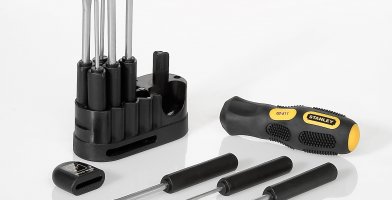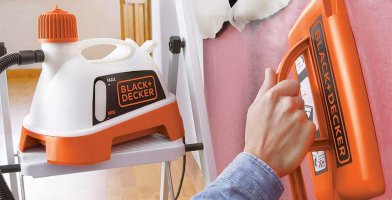Best Stud Finders Reviewed and Rated
We have all known someone, or been guilty ourselves, of trying to install shelves, heavy pictures, or something of the sort without properly locating a framing stud in the wall. My worst offense of this was a decade and a half ago when I put up a shelf in my new apartment – I think I was around 19. It worked fine until I put some awful decoration my girlfriend had bought up on it. She wasn’t happy to come home to me picking shards of glass out of the rug.
Our Top 3 Picks
[srpshortcode id=”3670″][/srpshortcode][srpshortcode id=”3671″][/srpshortcode][srpshortcode id=”3672″][/srpshortcode]
We learned the hard way. Some people have been both more and less fortunate in their stud experiences. Either way, anyone who has worked on enough projects around the home or their business knows the importance of accurately locating studs before doing anything else with the wall. To that end, the “tool” industry has developed a number of quality stud finders that are currently available. Some are electronic, others are magnetic – and they all fall within different pricing and capability brackets.
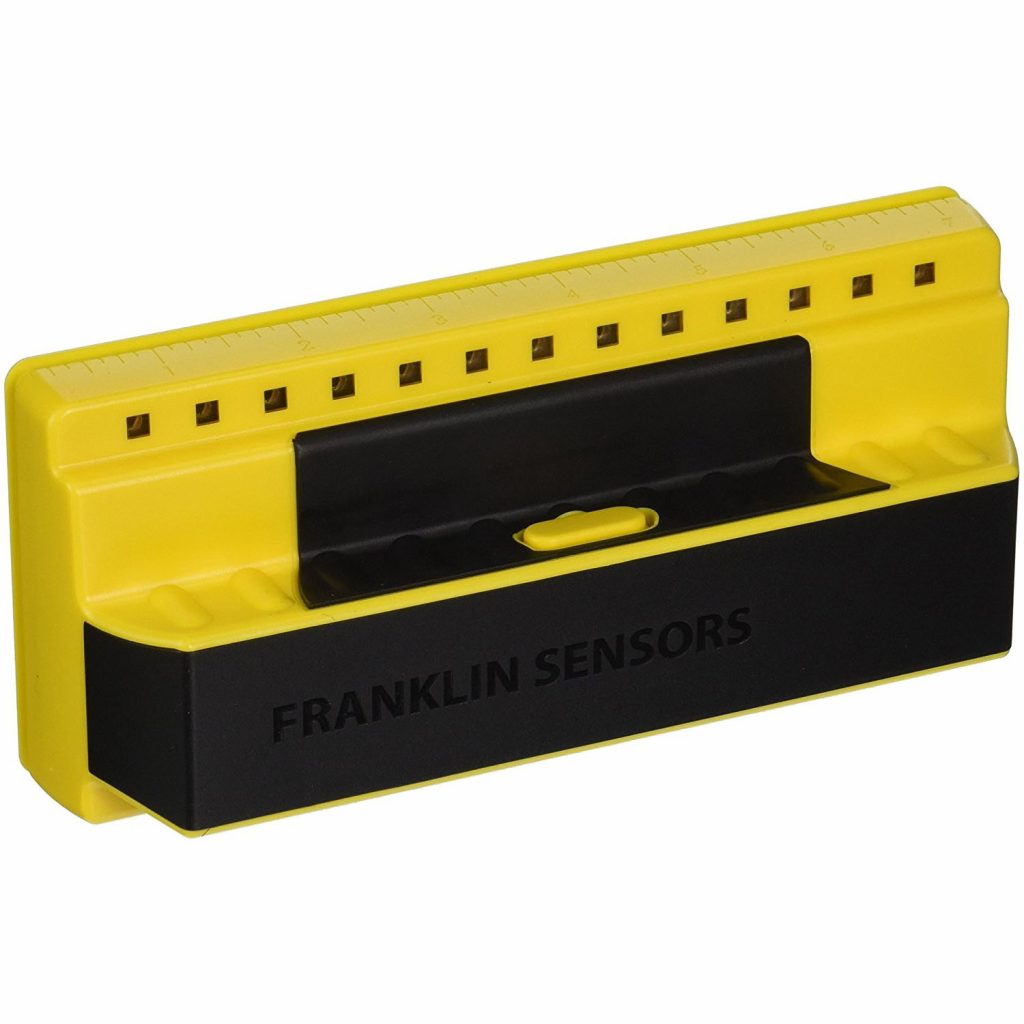
The cost of a stud finder will almost always be less than the cost of repairing the damage done from not locating one before hanging something.
Since there is actually a surprisingly large market for stud finders nowadays, much more than we had initially estimated, we put together a list of the ten best stud finders available for purchase. To further help you sort through your own buying process we have answered some of the most frequently asked stud finder questions, as well as provide a reference list for what quality and features we believe make for the best stud finder.
In order to offer a diverse list that will be useful to both pros and hobbyists, an effort was made to present the best offerings for a plethora of uses. Cost effectiveness, as well as overall abilities, were both relevant factors. Although the list takes on a ranking structure, it is important to realize what is “best” for you will ultimately come down to you. Maybe your budget has an absolute limit, or perhaps your stud finder needs are limited- or maybe you legitimately need the best device on the market. Our list strives to provide options for all those diverse needs.
To that end, much of the final ranking was done on a price/value ratio. Meaning that if a stud finder was very expensive, even if it had the best features, those features needed to be considered worthy of the price for the overall value to be deemed high. An example would be a stud finder that is roughly 30% better than the competition but is 80% more expensive. This tool would likely receive a lower overall price/value ranking than one of its competitors.
10 Best Stud Finders
Very sensitive to rotation. LCD vertical angles are very limited.1. Zircon 68314
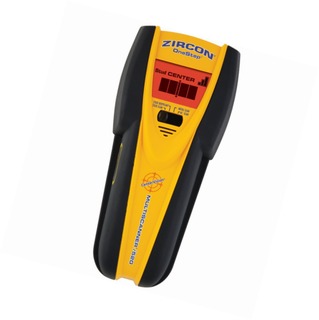
Weight: 6.5 oz.
Batteries: 1 9V alkaline battery
Display type: LCD
Scan Depth: 1.5”
Find the center of wood or metal studs up to 1 1/2" deep
Locate metal pipes or rebar up to 3”
Indicates the presence of electrical wiring up to 2”
4-mode switch (Stud Scan, Deep Scan, Metal Mode, AC Scan)
Signal strength indicator helps to distinguish between shallow and deep targets
Audio tone
Price/Value
This stud finder may just give you the best bang for your buck. Relatively inexpensive and packed with features. You are unlikely to find a tool that is much better without doubling or tripling the price.
Who Should Buy This?
DIY, homeowners or avid hobbyists who need a reliable and above average stud finder. Pro’s can probably put this tool to great use as well, and if you don’t want to spend a couple hundred dollars on a top end device - this may be a worthwhile purchase.
Easy to use. Very accurate. Fast and problem free. Limited in information it can convey to you.2. Precision Sensors 962682
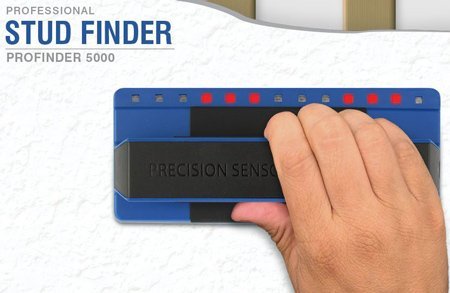
Batteries: 2 AA
Display type: LED Lights
Scan Depth: 1.7”
One-step operation: just press the button
More sensor pad area than conventional stud finders
Senses hidden objects with, or without, sliding across the wall
Price/Value
Inexpensive and effective. As long as you aren't trying to locate or gather any complex info about what’s going on in the wall, this is a great purchase. It does what it is built to do, and it does it well.
Who Should Buy This?
This is perfect for the general homeowner. It is too limited for advanced uses, but it will ensure the hanging of shelves and similar objects is done quickly and easily.
Great for finding all sorts of materials. Loaded with useful features such as the “traffic light” alert. Runs on AA batteries rather than a Bosch rechargeable.3. Bosch D-TECT 120
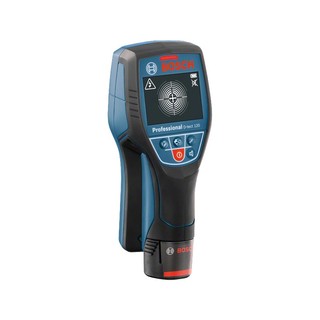
Weight: 1.1lb
Batteries: 4x AA alkaline battery
Display type: LCD
Scan Depth: Copper Wiring: 2-⅜” | Metals: 4-¾” | Wood 2-⅜”
Small area spot scan
Never requires calibration
Can detect in any direction
Three modes see through more materials
Centre finder
Price/Value
This is very expensive for a consumer level tool, but it falls very much on the inexpensive side when we are talking professional tools. For what it delivers - it has some outstanding value.
Who Should Buy This?
This is a great choice for the professional not looking to spend $800 on a stud finder. It may not have thermal imaging, and can’t detect shielded wires - but it handles most everything else in stride.
Plenty of features. Accurate light system. Deep Scan functions Price and features make it hard to discern target audience. Too expensive for general consumers, perhaps not as effective as high-end pro tools.4. Craftsman 949067
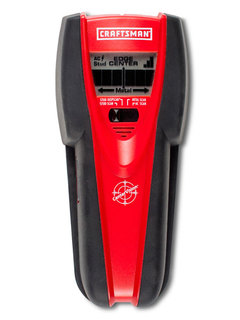
These features, as well as the price, put it right in the middle of consumer and professional usage. It is nowhere near as expensive as the highest end devices, while at the same time it is full of useful features that will assist any pro on the job - let alone someone simply trying to hang a painting.
Weight: 0.55 lbs
Batteries: 1
Display type: LCD
Scan Depth: 1.5”
Find the center of wood or metal studs up to 1 1/2" deep
Locate metal pipes or rebar up to 3
Indicates the presence of hot electrical wiring
4-mode switch
SpotLite® Pointing System
Audio tone
Price/Value
This may be the Achilles heel, or perhaps the best feature, of this tool. It depends on how you look at it. Either you are buying a relatively cheap professional stud finder - or you are buying an expensive consumer-level stud finder. Both are accurate in their own ways. This is a great tool either way and is very good for what it is designed to do.
Who Should Buy This?
That's the question. Whether you are a professional, homeowner or a DIY enthusiast - you can find great use in this product. It just depends on your needs or budget. It may overshoot, or undershoot the mark - or it may land right in that sweet spot.
Very useful in an inexpensive package. DeepScan® mode Requires a couple passes to ensure accuracy.5. Zircon e50-FFP

Weight: 4.3 oz
Batteries: 1 9V alkaline battery
Display type: LCD
Scan Depth: StudScan mode: Up to ¾ in. | DeepScan® mode: Up to 1½ in
Locates the edges of wood or metal studs up to 3/4 in
DeepScan® mode doubles the scanning depth to 1 1/2 in
LCD display indicates when a stud edge is approached
Shines an arrow-shaped light on the wall to mark the target
WireWarning® detection up to 2 in
Price/Value
Inexpensive and provides a host of features. It may not be as accurate on the first try as a the Profinder 5000, but its ability to sense wires and provide more thorough feedback is worth noting.
Who Should Buy This?
This is best suited to homeowners rather than pros due to its limitations. For the homeowner, however, this should be everything you need in an inexpensive package.
Versatile. Affordable. Solid Detection Abilities. Other users complain of accuracy issues and false positives. Always double check.6. Aom WSTS002
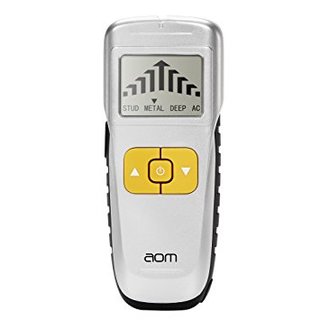
Weight: 1.1 pounds
Batteries: 1 9V alkaline battery
>Display type: LCD
Scan Depth: AC (Current):5-8cm ; Metal: 3cm; Stud: 30-35cm; Deep: 40-50cm
Audio ques
Price/Value
Good value for a solid tool. When bought at the right time, or on sale, this tool can be had for an absolute bargain. It provides a solid quality detection ability at a relatively low price.
Who Should Buy This?
Though not suited to professionals, this is a great tool for the homeowner or DIY crowd. Affordable and effective - it is a low-risk purchase for those who need metal, wire, and deep scanning abilities.
Very Cheap. Easy and Fast to Use. Magnets are super accurate. Limited feedback, only suited to the one task.7. CH Hanson 03040
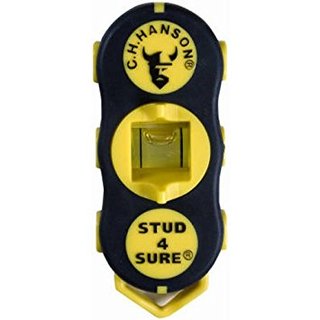
Key Features
Weight: 2.4 ounces
Batteries: N/A
Display type: N/A
Powerful magnets allows hands free use
Small and compact, easily fits in pocket
2 way level for ease of marking
No need for batteries
Price/Value
This device costs next to nothing and is very effective for what it does. There is a reason for its popularity. Even if you are looking for a top of market stud finder - this is a great augment for your stud searching methods.
Who Should Buy This?
While this is in a lot of ways simply a knick-knack drawer device best suited to home use - it can easily be paired up with high-end imager stud finders to verify and double check results. I’d recommend this to everybody as a backup and double checking tool.
Easy to use. Limited feedback, only suited to the one task.8. Studpop 100480-SP

Weight: 1 ounce
Batteries: N/A
Display type: N/A
Works on sheetrock, plaster, lath, tile
Unique popper indicates when it finds the metal
No batteries
Price/Value
Low cost and effective for what it does. This is a decent alternative to the Hanson 03040 and can arguably be preferential due to its visual cue mechanism.
Who Should Buy This?
Mostly for simple home use - this too could be paired up with pro level tools as a fact checker of sorts. Some scanners can be off by a bit - use this Studpop to verify stud presence.
Inexpensive.
Magnets don’t lie.
Powerful Scan Provides loads of info Too big for tight areas.9. DEWALT DCT419S1
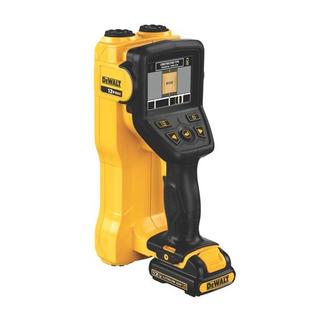
Key Features
Weight: 6lbs
Batteries: 12V battery
Display type:Color 3.5-inch LCD display
Scan Depth: Drywall/Tile/Concrete 3” | Wood 1.5”
Detect 5 types of materials
Goes through a wide range of surfaces such as plywood drywall, ceramic or concrete tile
Large Display Screen
Price/Value
This is on the expensive end of scanning stud finders - but i is well worth the price if this is the type of information you need.
Who Should Buy This?
This is a fantastic tool for remodelers, general contractors, installers, and service technicians. Most professional will be able to put these thorough scanning abilities to great use. This is likely much more than the average homeowner will need.
Inexpensive Packed with features Some consistency issues.10. Zircon e50-FFP
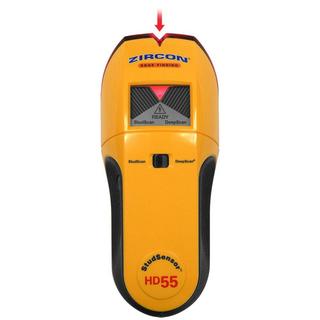
Weight: 4.3 oz.
Batteries: 9V alkaline battery
Display type: LCD
Scan Depth: ¾” - 1.5”
Wire warning detection
Spotlite pointing system
Alerts user to start the scan in a new location if scanning begins over a stud
Indicates when the tool is calibrated and ready for use
Price/Value
Very low cost for what you are getting. This provides a bunch of punch for your dollar. While it is not the most powerful scanner - if you are working with easier to scan materials, It will handle it in stride.
Who Should Buy This?
Definitely a homeowner or hobbyist device, but a solid one. Paired up with a magnetic stud finder like the Studpop and you can handle a whole slew of tasks easily and more efficiently.
Criteria for Evaluation
In the process of gathering together the list of possible candidates, evaluating them, and then eventually giving them an overall ranking we were forced to dig through a slew of stud finders. In order to evaluate all of the possibilities consistently, we had to create criteria from which to work from. While the apparent ratings were used – like the stud finders accuracy and sensing range – we also had to look at extra features and function issues -such as battery types.
Price also played a significant role. Many of the tools available function decently and are all priced in the same general brackets – it was the standout features, standout functioning, or standout piece that tipped many into the top ten list. We also wanted to ensure we offered a diverse range of tools – from pro level to consumer, to robust >$20 options. Each of those criteria found its champion on the list – though decidedly we opted for the lower cost pro tool rather than venturing into the $600+ range – which would open this list up to a whole new slew of criteria.
Some opinions are based on the numbers – and some are clearly subjective ease of use for example. For that reason, we have supplied you with the basic list of criteria we worked from and a general explanation of how it was implemented.
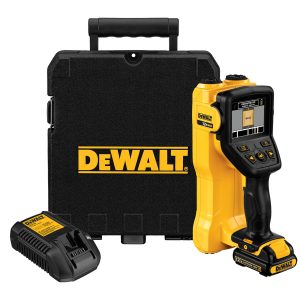
Price
Price was based on an overall value judgement. If a tool functioned or could accomplish roughly 100% more tasks than a competitor – that was noted – but if it cost 200% more than that same competitor, it was judged to be of a lower overall value – or at least lost points in the price bracket. Though the price is a solid number, the value is subjective. A professional will need a very different tool than an at home user – so your own personal value may differentiate item to item.
Battery
For most tools we review this actually plays a rather significant role. For stud finders – not so much. Though it was a factor in a couple cases. Magnetic stud finders wouldn’t need batteries, and the majority of the tools on this list took either AA or 9 volts. Most operate on an even playing field. Some tools that didn’t make the list utilized proprietary batteries, and while that was sometimes a boon, none of them eventually made the cut.
Scan Depth
This was possibly the next biggest factor next to the price. The scan depth is overall how well this tool operates when dealing with diverse materials. Lower scan depth tools required exceptional accuracy or fantastic features (or a very low price) in order to make the list. Large scan depth tools had an obvious leg up.
Accuracy
Accuracy is hard to measure. There are so many circumstances that affect it. If you just want to go by Amazon reviews – you can find as many reviews touting accuracy as you can decrying it – for almost every device. The exception, of course, being the magnetic tools. Magnets only work when there is legitimately metal behind the wall.
All that said, the tools we were able to personally measure all had a fairly accurate reading, and those that were the most accurate got preference.
Extra Features
The ability to detect wires or to determine wood vs. metal can often make the difference for a professional deciding on the tool. We knew that and made sure to include the fact that a device could whenever possible. These features, past general stud finding, played a prominent role in the inclusion of many of the tools.
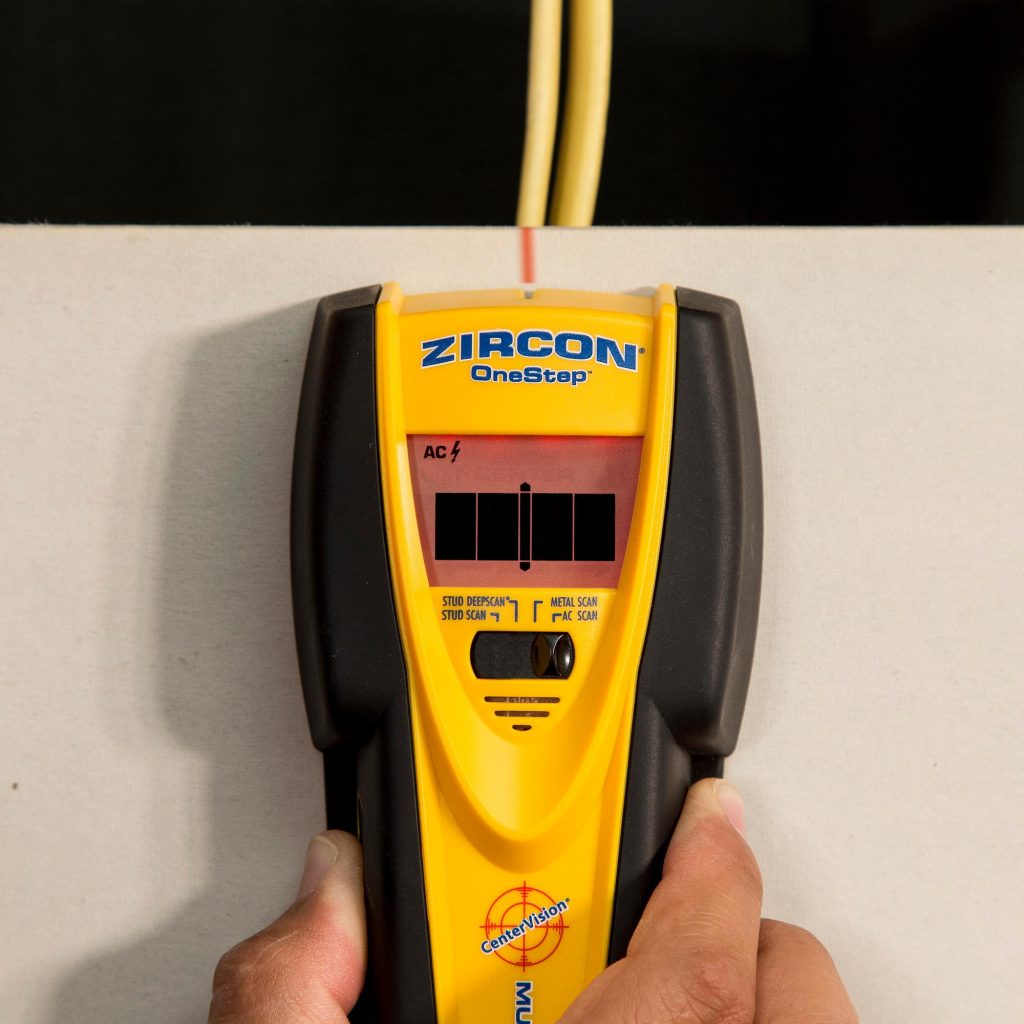
Do Stud Finder Apps Work?
Traditional stud finders are handheld devices used to locate studs used in framing on wall surfaces. The methods fall into two main categories; electronic stud finders and magnetic stud detectors. There, however, exists a third type of stud finders, one based on the newer RF technology. This third type of stud finder locates studs via 3D imaging technology. In the past decade or so, advances in construction technologies have given rise to a new generation of stud finders. The advent of Smart Phones has further revolutionized the way people perform basic tasks. From building – to health and business, smart phones have had the single biggest impact on human society.
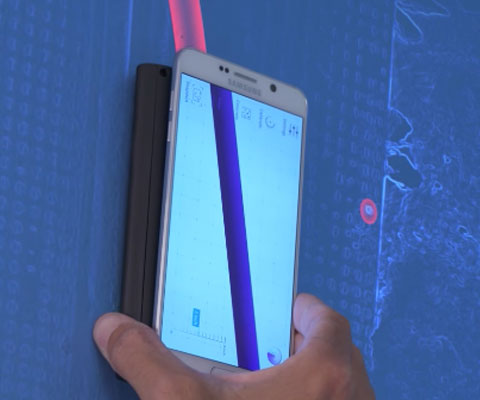
Stud finding mobile applications are a recent development that allegedly aims to phase out traditional stud finding devices, in theory at least. A mobile application capable of enabling the user to locate studs hidden in walls sounds like a bold claim. It would be easy to dismiss the idea at first, but a closer look at the operating principles reveals a truth, almost straight out of the sci-fi pages. Stud finding apps do indeed work. The big question however is, how is that even possible?
To first and foremost understand how stud finding apps work, we must examine the workings of traditional stud finders. First up, electronic stud finders. This class of stud finders works by tracking changes in the electrostatic field of material. A capacitor plate is used to detect the said electrostatic changes. Materials such as wood being nonconductors of electricity support a static field. Differences in material density vary this static field which allows the stud finder to detect stud locations. Depending on how advanced the electric stud finder is, it may be possible to determine the depth and type of material using a combination of scanning methods.
Magnetic stud finders comprise a magnet encased in glass or plastic. To locate studs, the device is slowly moved across a wall. When the magnet appears to move even slightly, that is an indication of a metal stud, nail or screw embedded in the wall’s material. Although not the most accurate method, magnetic stud finders give contractors a general idea as to where studs are located. Other factors such as stud location beyond one-inch depth and type of material the studs are made of concern magnetic stud finders cannot address. Magnetic stud finders are typically smaller and require no batteries. They are however tedious to use and are not always accurate. This difference in accuracy and range regarding depth sets electronic stud finders as the preferred tool. It is however recommended to have both gadgets in your toolbox.
Stud Finding Apps; Knockoff Or Next-Gen Innovation?
The age of smartphones has brought along numerous innovative creations in business, health, communications and construction. IOS, Windows mobile and Android are the three top operating systems. The stud finding mobile applications, even by mention, sounds like those scam mobile apps in the same category as night vision apps and X-Ray apps. However, a scrutiny of how stud finding apps work reveals a different story. So perhaps you shouldn’t be so eager to dismiss them.
Most cell phones these days have an inbuilt magnetic compass as a standard. That statement in itself pretty much gives you an idea on how stud finding applications work. If not then, here we go. Stud finding applications offered on the various mobile platforms locate studs by monitoring the slightest of compass reading disruptions. As basic elementary physics would have it, ferromagnetic materials and some selected elements disrupt magnetic waves. In the presence of a magnetic compass, these disturbances in the magnetic field can be detected. A majority of stud finding mobile applications work in a similar manner as magnetic stud finders.
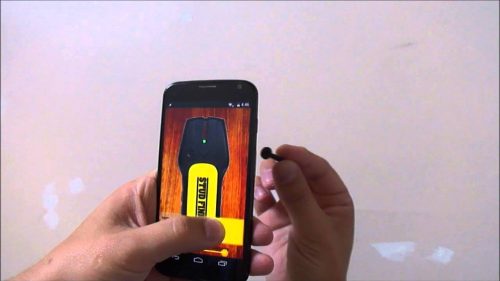
Stud seeking mobile applications are available in the different app stores either for free or at a small charge often not exceeding 4$. On the IOS platform, there are numerous paid stud finder applications going by different names. Similarly, the Google Play Store offers a variety of stud finding apps. It is recommended to consider individual app ratings before downloading them. Reading through the reviews can give you some insight into whether or not the stud finding apps do work and in most cases also the issues other users have experienced the same.
On the Android platform, a new professional application locates studs via 3D imaging technology. This is achieved through a separate accessory that links up with a phone via an app interface. Here’s how it works, you buy a small accessory that is capable of magnetically attaching onto your phone’s back allowing efficient one-handed operation. Afterwards, download an app from the Play Store that works as the accessory’s interface. The whole set-up is easy to use and does not require any specialized training. With simple instructions, you’re ready to go.
To commence finding studs, you follow the wall’s surface just like you would using an electric or magnetic stud finder. Using RF radar technology, the small device attached to the back of your phone creates a visual representation of the underlying environment. This information is relayed on your Smartphone’s screen on the app’s interface. This way, you get a more detailed picture of any objects detected, the material they’re made of, the orientation and more importantly the objects’ depth. This accessory and app combination is effective up to a depth of four inches.
This method makes DIY home projects such as renovations and remodeling projects a whole lot easier. The app allows users to differentiate between objects lodged in your walls such as electrical wires and installations, nails, studs and screws. Fancy, right? Well, the downside to this method is that there is a 200 dollar price tag attached to it. This is considerably higher than the average pricing of an electric stud finder. For the added features, some consider this entirely reasonable.
So based on the above detailed information and statistics, we could tell that yes these stud finder apps work.
FAQ
What are the Different Types of Stud Finders?
Magnetic
Low cost and reasonably efficient – these are the OG’s of Stud Finders. They seek out the nails in your studs. While I said a couple of times in the reviews “magnets don’t lie” I failed to mention they also don’t tell you what metal it is detecting. Rather limited in the feedback they give – these are nonetheless useful devices.
Metal detecting
These devices use an electromagnetic field rather than magnets to detect the metal in the wall. Their sensitive sensors – and the proclivity for false positives makes these generally unwanted in most circles. They aren’t all terrible – but many are.
Ultrasound
If it works for a nuclear submarine, it will probably work on your wall. These devices sense out wall density and help you locate nearly the exact spot of the stud. These are generally considered the most accurate and reliable types of Stud Finders.
What does ‘Center Finding’ mean?
This does pretty much what the name implies. Through a series of feedback mechanisms, either lights or an LCD screen – the device will inform you when you are at the center of the stud, rather than somewhere on the edge. Though not always 100% accurate they are typically a step above. For heavier mountings, you will want to make sure you are as close to the center of the stud as possible for the most support.
Can I use this scanner on the exterior of my home?
Typically no. The weathering and added layers to the exterior will prevent accurate readings from anything but the most powerful of devices.
Why are False Positives or Inaccurate Readings so Common?
Walls are surprisingly complex structures. They normally aren’t perfectly straight, and material like sheetrock may contain hidden bubbles. If a texture is applied to the wall, the difficulties only stack. That is why the deeper the sensing range of a stud finder the better. More robust sensors can usually overcome these hurdles. Though the fact remains, you should always double check when possible. I personally always whip out the CH Hanson 03040 to double check when applicable.
Why Do I Need a Live Wire Detector?
Electrocution is no fun. While newer walls usually aren’t made with the potential of shocking a handyman, many walls still contain hidden live wires just under the surface. Anytime you start nailing or drilling into a wall you run the risk of hitting a live wire. The outcome for this can range from no big deal – to potentially causing serious injury.
A Livewire detector is a method of providing you some warning before you put something into the wall.
Making Your Decision
This list should give you all the answers, criteria and brands to help you make an informed choice regarding your next stud finder. I know the list was light on pro tools – but let’s be honest – most of you are already dead set in your mind about what tool you believe to be the best and why. Either way, every device on this list is of a standard and quality we will happily stand behind – and can explain the logic and factors that went into its inclusion. If a tool on the list fits your needs – you are unlikely to be disappointed.
No one ever fully agrees on the best tool, but this list is a solid starting point for making an informed purchase. The goal here was to help guide you through the possible buying process, and I am confident you have everything you need here to do just that.
So whether you are a professional looking to hunt studs down like a shark, or a hobbyist and homeowner trying to hang the perfect shelf, Good luck – and remember – build smart, build safe, and build big.



